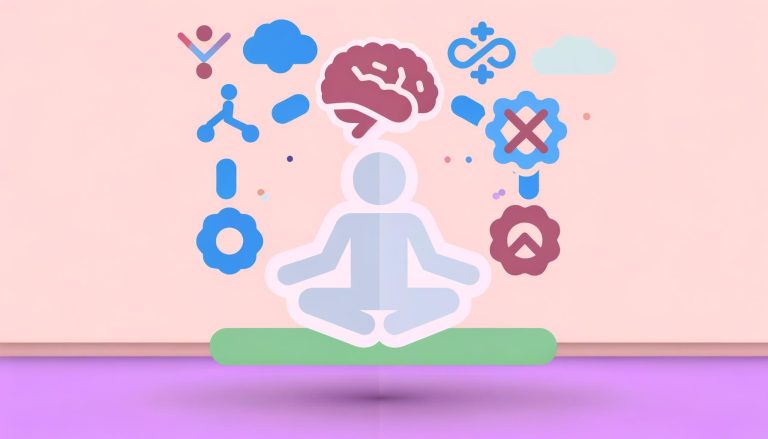Experiencing trauma is part of the human experience, but sometimes these traumatic events leave lasting mental scars that can affect one’s quality of life long after the event has passed. Post-Traumatic Stress Disorder (PTSD) is one such condition that manifests long after the traumatic event. Recognizing and addressing the symptoms can be crucial for recovery and well-being. This article provides a comprehensive guide on understanding, identifying, and effectively managing PTSD symptoms.
Understanding PTSD: What It Is and How It Affects People
PTSD is a mental health condition triggered by a terrifying event—either experiencing it or witnessing it. Although it’s commonly associated with war veterans, PTSD can arise from other types of trauma such as accidents, natural disasters, or personal assaults. Symptoms are often severe enough to interfere with daily functioning and relationships, making timely recognition and intervention critical.
Common Causes of PTSD
While the causes of PTSD are varied, some common sources include:
- Combat exposure
- Natuarll natural disasters
- Sexual or physical assault
- Accidents
- Death of a loved one
Recognizing PTSD Symptoms
Identifying PTSD can be challenging because symptoms may not appear immediately after the traumatic event. In some cases, symptoms might develop months or even years later. The symptoms can be broadly classified into the following categories:
1. Intrusive Memories
People with PTSD often experience recurrent, involuntary memories of the traumatic event. This may manifest as flashbacks or distressing dreams.
- Recurring, involuntary memories of the traumatic event
- Flashbacks or reliving the event as if it’s happening again
- Disturbing dreams or nightmares about the trauma
2. Avoidance
Avoidance symptoms involve efforts to avoid reminders of the traumatic event. This can lead to the evasion of places, activities, or even people that trigger memories of the event.
- Efforts to avoid thinking or talking about the traumatic event
- Avoiding places, people, or activities that remind them of the trauma
3. Negative Changes in Thinking and Mood
Changes in cognition and mood often accompany PTSD. This can result in memory problems, negative emotions, and detachment from others.
- Negative thoughts about oneself or the world
- Hopelessness about the future
- Memory problems, including trouble remembering aspects of the traumatic event
- Difficulty maintaining close relationships
- Feeling detached from family and friends
4. Changes in Physical and Emotional Reactions
Known as arousal symptoms, these can affect one’s physical and emotional state, leading to irritability, hypervigilance, or sleep disturbances.
- Being easily startled or frightened
- Always being on guard
- Irritability or aggressive behavior
- Self-destructive behaviors, such as drinking too much
- Sleeplessness and difficulty concentrating
5. Additional Symptoms
Other symptoms might include feelings of guilt, shame, and maintaining persistent negative emotions. It’s crucial to note that the intensity and types of symptoms can vary from person to person.
Addressing PTSD Symptoms: Effective Strategies and Treatments
Recognizing the signs of PTSD is a critical first step, but addressing these symptoms effectively can significantly improve one’s quality of life. Various strategies and treatments can help manage PTSD symptoms.
Seeking Professional Help
One of the most effective ways to address PTSD is by seeking professional help. Mental health professionals can provide a range of treatments, such as:
- Cognitive Behavioral Therapy (CBT): A structured therapy that helps individuals understand and change negative thought patterns.
- Eye Movement Desensitization and Reprocessing (EMDR): A therapy that helps process trauma through guided eye movements.
- Medication: Antidepressants or anti-anxiety medications can help manage symptoms.
Building a Support System
Having a strong support network can significantly aid in the recovery process. Here are some tips to build and maintain a support system:
- Communicate with family and friends about your experiences and feelings.
- Join a support group where you can share your experiences with others who understand.
- Engage in community activities to foster a sense of belonging.
Self-Care Strategies
Incorporating self-care strategies into your daily routine is essential for managing PTSD symptoms. These could include:
- Exercise: Physical activity can help reduce stress and improve mood.
- Mindfulness and Meditation: Practices that help increase awareness and acceptance of the present moment can be beneficial.
- Healthy Lifestyle: Eating a balanced diet and getting adequate sleep can improve emotional and physical well-being.
Conclusion
Recognizing and addressing PTSD symptoms is a vital step towards recovery and restoring quality of life. Understanding the various symptoms and seeking appropriate professional help can lead to significant improvements. Building a robust support system and integrating self-care strategies can further enhance the recovery process.
PTSD can feel overwhelming, but with the right support and tools, it’s possible to manage symptoms effectively and rebuild a fulfilling life.
Sources:


